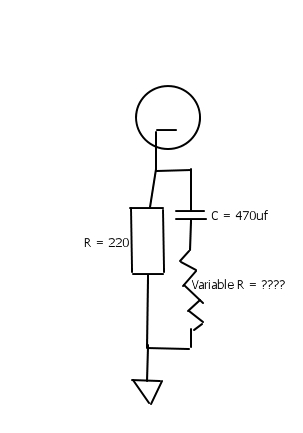Jim50hertz
Well-known member
Thanks Ian 8)



diggy fresh said:Very interested in this and pcbs!
90% of the B15 tone is in the loudspeaker.critterkllr said:Hmm, not a bad idea. Or perhaps a 25uF cap like a lot of other guitar amps? I'm just looking for another step closer to a B15 tone.
abbey road d enfer said:90% of the B15 tone is in the loudspeaker.critterkllr said:Hmm, not a bad idea. Or perhaps a 25uF cap like a lot of other guitar amps? I'm just looking for another step closer to a B15 tone.
CJ said:a simple yet effective tone control is to put a switch on the cathode bypass cap,
switched in for bass
switched out for guitar

The main effect of modifying the cathode bypass is changing the gain. Don't expect any spectacular change in tone. Using a pot in this position is very subtle. For a typical 12AX7 input stage, the variation would be about 5dB.SirCVH said:CJ said:a simple yet effective tone control is to put a switch on the cathode bypass cap,
switched in for bass
switched out for guitar
I have been looking into adding a cathode bypass adjustment as I am currently building this project. I am going to add a pot to both bypass cap circuits, and was wondering if there is a way to calculate the best value for the variable pot, best meaning a full tone sweep between no capacitance and full capacitance on the 470uf cap with minimal wasted turn space on the pot. Would you just start at a 1m pot and work your way down? Pardon my sketch:

Thanks for any help
abbey road d enfer said:The main effect of modifying the cathode bypass is changing the gain. Don't expect any spectacular change in tone. Using a pot in this position is very subtle. For a typical 12AX7 input stage, the variation would be about 5dB.
That may be different with a much lower value of the capacitor (0.047-1uF), the minimum resistance position of the pot giving a significant HF rise.
With a 220r cath res, a 1Meg pot will behave exactly like a switch, nothing for 99% of the rotation and a rather moderate change on the remaining 1%.
I would use a pot value about 5-10 times the cath res. A rev Log taper would be recommended (or a standard log taper, but the maximum effect will be in the CCW position). Lin taper will definitely be cramped at one end.
That would be tha case if the capacitor had a much lower value. With 470uF, as shown on the schemo, the variation of frequency response would appear below 1Hz.CJ said:you can really hear the difference with the switch in or out at the low freqs,